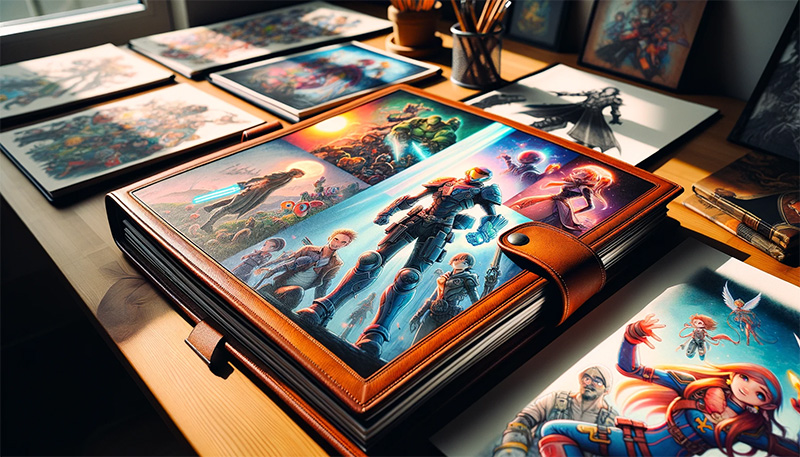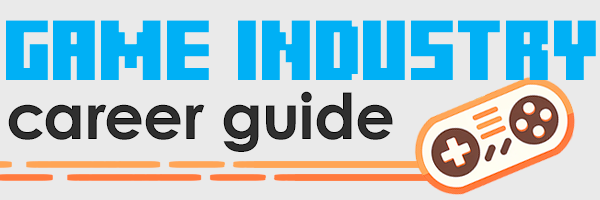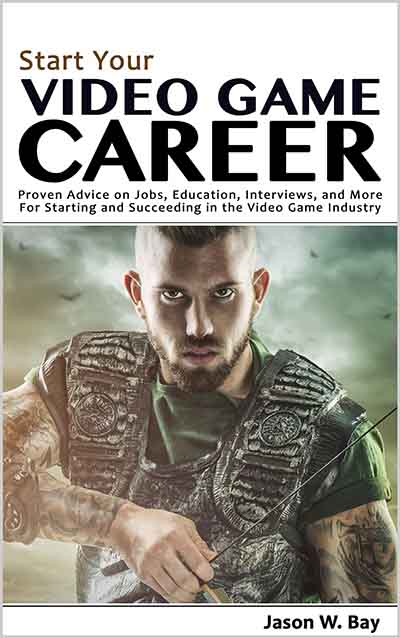The Ultimate Guide to Game Art Portfolios

If you’re applying for jobs as a game artist, there’s nothing more important than building a strong game art portfolio to showcase your talent and creativity. When you apply for jobs, your portfolio is your calling card — it’s your first and best chance to make a great first impression.
But building a strong game art portfolio isn’t easy. It can be a daunting task, especially if you’re just starting out. That’s why we’ve assembled the best advice from professional artists and art directors in the game industry. Their advice will help you navigate the process, and create a portfolio that sets you apart from your competition.
Whether you’re a student, or a seasoned artist, check out these practical tips and insights from the pro’s. With a little help, you’ll build a game art portfolio that impresses employers, and opens doors to the next stage of your career as a game artist.
Why is a game art portfolio important?
For many jobs, having a good resume is the most important factor in getting hired. But art jobs are different. When you apply for an art job, the hiring manager or art director is likely to skim your resume briefly and then go directly to your online art portfolio.
That’s because your portfolio gives the art director a clear sense of whether you’re talented, prolific, and have the range they’re looking for. In other words, your portfolio tells them if you came from the heap of lackluster art school grads, or whether you’re exactly the competent and creative professional that they’ve been searching for.
What should I put in my game art portfolio?
Building your game art portfolio is a big undertaking. For most artists, it’s an ongoing project that you update regularly as your skills improve over time. But whether you already have a portfolio or you’re just starting out, there are some important best practices that every artist should follow.
Build it online. Physical portfolios are great for art school, but can’t easily be sent to jobs when you’re applying. According to pro game artist Morgan Mulhall, hosting your portfolio online is the easiest, fastest, and best way to present your work to potential employers. And having it be digital means employers can look at it in high detail, and see it exactly the way you wish to present it.
Keep it simple. Your portfolio website doesn’t need to be flashy. As concept artist Caleb Parrish puts it, “Don’t distract from the work. Make your presentation about the images, not the interface.” So let the work speak for you, not the site design. Need some inspiration? Check out these professional game art portfolio examples.
Put your best work up front. Art directors look through dozens and dozens of portfolios each day. If you don’t grab their attention with a high-quality piece of work in the first few seconds, they’ll close your portfolio and move on. They have little time to explore your whole site — if you make them dig, you’ll miss out.
And take the advice of Nathaniel Hubbell, a professional visual effects artist: “If in doubt, leave it out. If a piece of work doesn’t present your skills at their best, it doesn’t belong in your art portfolio.”
Quality over quantity. Only include professional-looking work. Your work should look like it came from a current-generation game or film — if it doesn’t, then don’t put it in your portfolio. Remember that you’ll be judged by your worst piece, so try not to have any stinkers on your site.
Also, a few high-end pieces are better than many pages of mediocre work. As Mulhall advises, “You don’t need to beef up the amount of work shown. The finish and skill of the work matters to employers,” not the number of pieces included.
Surprise and delight. Art directors are people too — just like you, they’re excited to work with like-minded people who share a passion for making truly memorable experiences. So try to include pieces that are surprising, and can showcase your own uniqueness and originality.
For example, professional game artist Mathias Takacs’s portfolio includes a piece he made for his kids, a 3D animation over live video “elf on a shelf” animation taking a bite out of their gingerbread house. As he puts it, “A few days of work for a few seconds of fun!”
Include a shot breakdown. A shot breakdown is a detailed explanation of what you contributed to each particular shot or scene in a game. It usually describes the assets you created, and the tools and techniques you used.
According to game art director Kristina Alfonsi, it’s always helpful because it adds context and helps to understand how an artist breaks down their work. “The way you solved a problem, or elevated an overall shot with your individual contribution, can be a deciding factor to pursue an interview.”
Fit the style of the jobs you want. If you want a job at a company with a defined style, then your work needs to fit that style. So research the company until you really understand their preferred style and tone. If you want to work at Bungie, then your work needs to look like it could live in the Halo universe. Simple as that.
Include your contact info. Make your resume and contact information extremely easy to see and access. For example, include it in your site’s header, so employers can download your resume and see all of your contact info from any page.
Keep personal items off your site. Art directors don’t care how awesome your cat is, they don’t want to see pictures of it!
What factors make a strong game art portfolio?
According to Randy Briley, veteran game art director and senior lecturer at DigiPen Institute, art directors look for “skill level, originality, and the x-factor.” If your portfolio doesn’t have all three, you won’t get hired.
Briley has spent over twenty years as an art director, vetting and hiring eager art applicants. So he knows exactly what to look for when reviewing an art portfolio, and he does it with a speed and precision that you might find surprising. “I look through dozens and dozens of portfolios each day. If you don’t grab my attention with a high-quality piece of work in the first few seconds then I’ll close your portfolio and move on,” he says.
Skill level
Most artists know that a primary job of their portfolio is to show off their skills and talent as an artist, so they lead with pieces that they hope will prove their technical prowess. And that’s a solid strategy. “I can tell in two seconds when looking at any kind of asset where the artist is at in terms of execution,” Briley says.
He looks at multiple facets of each piece in a portfolio, from lighting, composition, and style, to anatomy, character and environment design, and painting method. And, he says, he does it quickly. “This takes little time to evaluate, and gives me an idea of where they rank in regards to others in my department.”
Originality
While a great many artists have honed their technical chops over time, it’s more challenging to develop portfolio pieces that are truly unique.
Art directors tend to stay on top of the current art scene, so they can tell the difference between original portfolio pieces and works that are dangerously derivative. Briley says that he keeps up to date with current films, games, book illustration, websites, and popular artists to make sure he’s not seeing “just a simple regurgitation of someone else’s creative work.”
Art directors are also well-versed on the ins and outs of AI-generated art, and are becoming more adept at identifying “AI assisted” art vs. human-created content. So don’t risk it — if generative AI is part of your process, be sure to clearly call it out on each applicable piece in your portfolio.
The “x-factor”
Lastly, is the x-factor — basically, that “special something” that comes through in your work, and makes you stand out from your peers. It’s that subtle spark that defines your personality as an artist. A particular “voice” that’s unique to you.
When reviewing an online art portfolio, Briley looks for that spark and then asks himself: “Does that voice fit the particular project? Does it fill a hole in the artistic strengths that currently make up the art department?”
X-factor is difficult to define, except to say (perhaps maddeningly) that you know it when you see it. Some artists seem to find their voice early on, while others develop it painstakingly over decades. But don’t let your fears of rejection keep you from finding it. Briley advises that it’s an iterative process — keep working at it intentionally, and you’ll continue to develop it over time.
What common mistakes should I avoid in my game art portfolio?
According to Eliott Lilly, a concept artist credited on mega-franchise titles like DOOM and Black Ops, there are 3 main mistakes artists make in their portfolios. These common, fundamental portfolio problems could be sabotaging your job hunt: Lack of focus, below the competitive bar, and simply underwhelming.
Art portfolio mistake #1: Lack of focus
Remember when Lily mentioned that the industry has doubled down on hiring specialists over generalists? Well, you’ll know you’re a generalist if your portfolio contains too many unrelated works of art, with different styles or game genres. Having too much variety in your portfolio is quickly becoming the mark of an amateur. Pick an area of interest, then crush it. Be a weapon expert, or vehicle guru, or badass character modeler. Whatever — just own it!
This can be a bit challenging because you’ll need to prover mastery of that subject matter. Not only will you have to study it inside and out, but you’ll have to do it better than the competition, before you can be considered the “go-to” person for the job.
Art portfolio mistake #2: Underwhelming (or forgettable)
Lily says, “There’s nothing worse than a ho-hum portfolio.” Art directors, hiring managers, and recruiters are people too. If they feel like they can do what you do, then they won’t see the value in hiring you. They will want to work with someone who can impress them and make them feel that they’re getting the most bang for their buck. You need to knock their socks off with a portfolio that oozes “oomph.” If they’re not asking: “Wow, how did you do that?!” then you haven’t hit the mark.
Finding the “cool” in the mundane is a skill that isn’t taught. You can find hundreds of tutorials on how to use a single piece of software, but creativity and problem solving are crucial skills that every video game artists will need, but rarely get covered in training videos. As a result, you can only rely on what you currently have stored in your reserves (this is generated from your life experiences, environment, etc). If you don’t have an abundance of creativity, then this might be the hardest thing to fix.
Art portfolio mistake #3: Below the competitive bar
Saying “You’re just not good enough” sounds brutal, but the truth is, of all the reasons why you may not be getting hired, this one is the easiest to fix with a bit of time and money. It’s just a matter of humbling yourself to accept this truth, buckling down and going back to “school.” Lily advises, “Take a few online courses, practice, and eventually, you’ll get better.”
There may be other issues — those are just a few. If none of them apply to your circumstance, then Lily’s last piece of advice is, “Give yourself an honest audit of your portfolio and career goals, then consider where you may be deficient. Does your portfolio align with your interests? Are you using the wrong software? Are you applying to the wrong companies?” See where the discrepancies lie, then fix them.
How can I get feedback on my art portfolio?
If you’re applying for jobs but not getting hired, the problem might be your portfolio. If that happens, then try to get feedback. If you don’t get feedback from the employer, then Briley suggests you enlist friends and other artists, or get feedback from strangers on your blog. Then change your work based on the feedback. Submit again. Rinse and repeat until you get hired.
Getting feedback on your portfolio can be uncomfortable, but it’s extremely important to honing your presentation. So when it comes to asking for feedback, Briley says,”Just do it! And do it often! Getting feedback about our work is the most important tool we have as visual artists to drive improvement.”
Hubbell says, “Don’t be afraid to ask a mentor, instructor, or trusted colleague for critiques on your portfolio. Getting advice from others is especially important for students just starting school, or recent graduates just starting the job hunt.”
The critique process has been the cornerstone of art development for centuries, and those that are shy about it will not get better as quickly as those that get feedback often.
How can I get my game art portfolio out there to be seen?
As we’ve learned, every professional artist needs a strong art portfolio to showcase your skill. But there’s another skill you’ll need to develop in order to get hired: the skill of professional networking. Artists starting the job hunt need to look everywhere, and make all the networking connections you can.
According to Mulhall, “Every job I’ve had, I got from knowing someone on the team, and they could vouch for me. It makes a huge difference getting an okay from someone inside the company as opposed to being one of many faceless names applying.”
So don’t just build your online portfolio and expect the job offers to roll in. Get out there! Join an online message board, go to local artist meetups, and exchange compliments or critique with other artists on online forums. The next artist you meet, might just be the one who helps you land your next job.
Further reading on game art portfolios
- Portfolio advice and inspiration from 7 professional game artists
- 3D Game Art & Animation Portfolio Example
- Video Game Concept Art Portfolio Example
- Game Environment Art Portfolio Example
- Mobile Game Art Portfolio Example
- Visual Effects Art Portfolio Example
- New Media Art Portfolio Example
- How to make a game design or art portfolio in 15 minutes
- Art Degree vs. Portfolio: What’s More Important?
Read my new book!
Making games for a living is an incredibly rewarding career, but it’s hard to break in unless you have insider knowledge. This book levels the playing field.


Leave a Reply